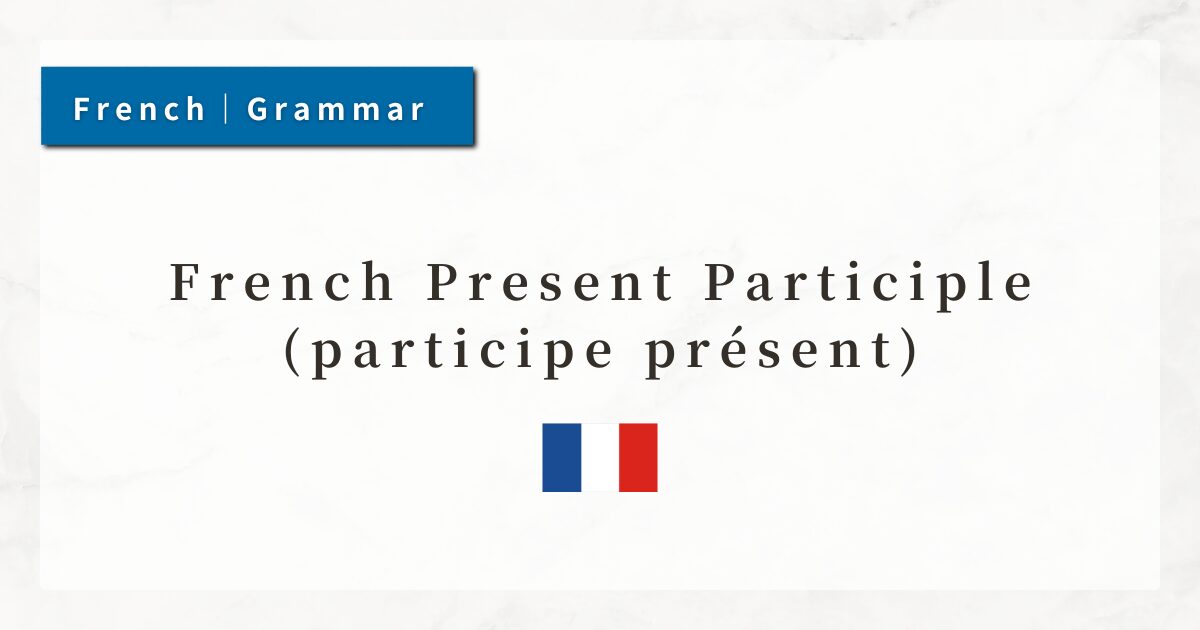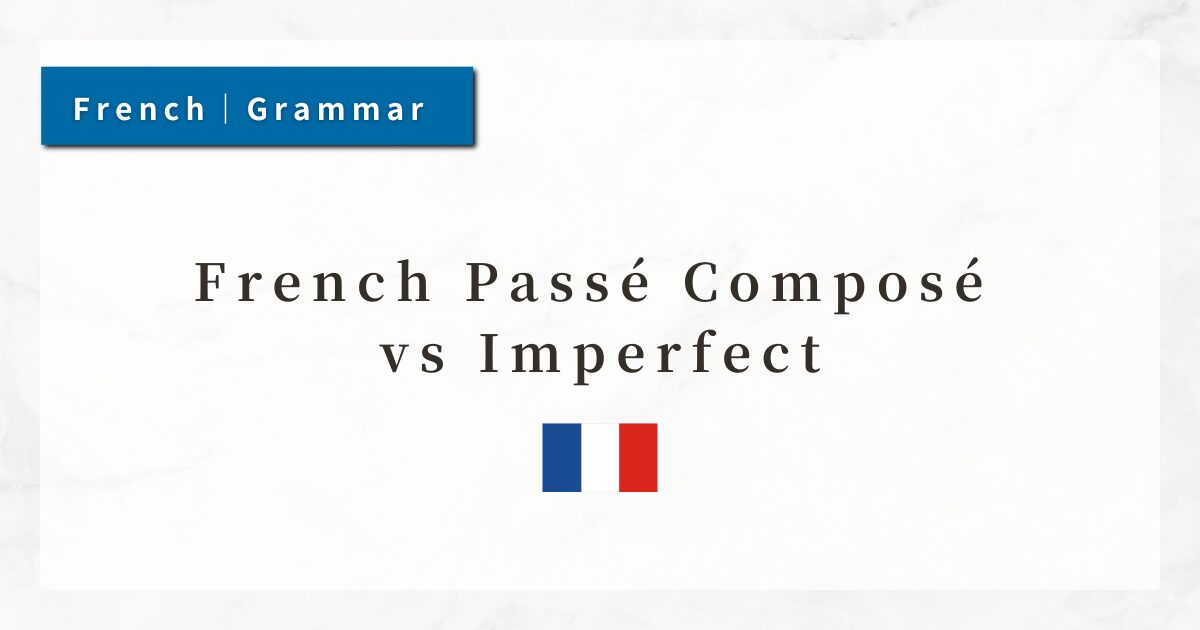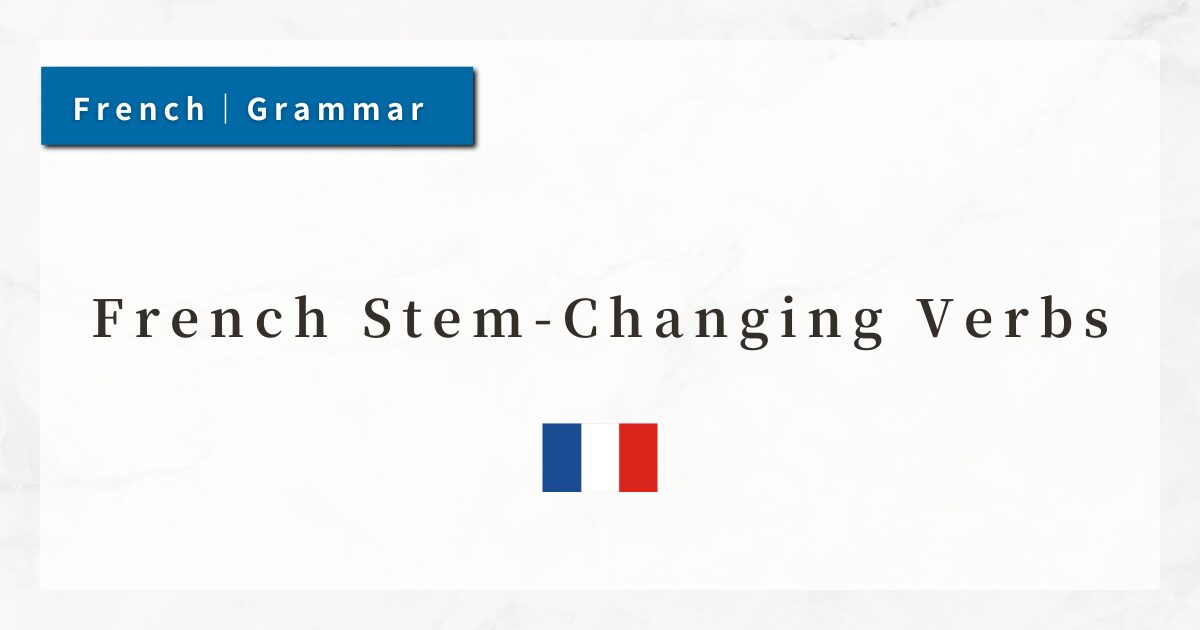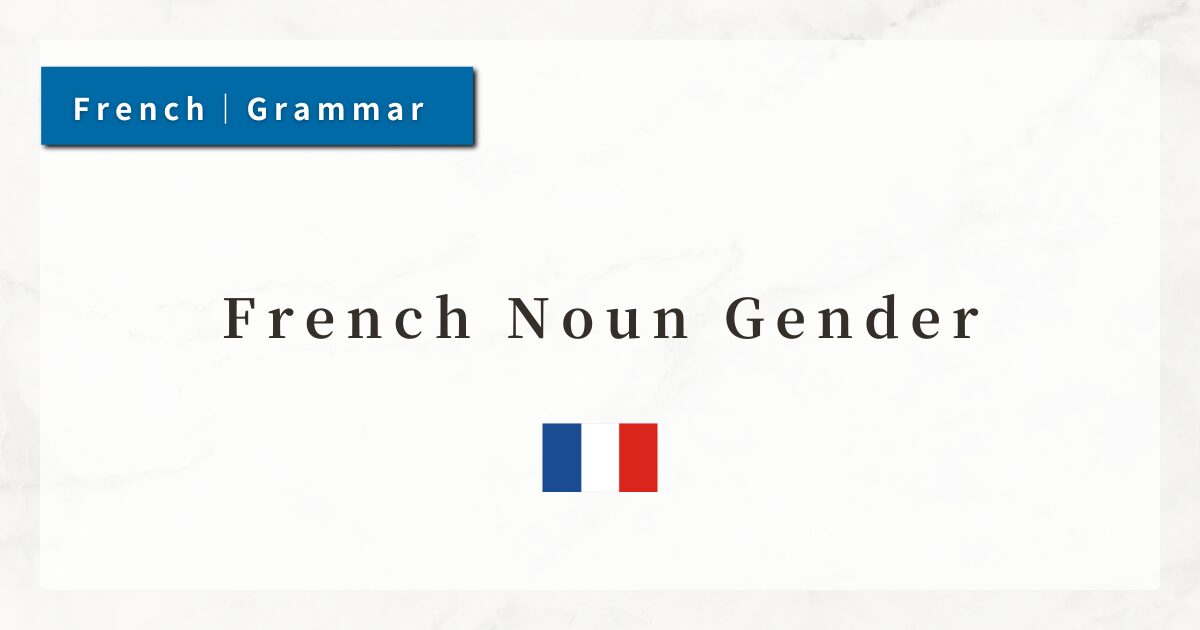#57 French Present Participle (participe présent) | Usage Rules and Examples

The present participle in French conveys meanings such as “while doing” or “in the process of doing.” It is used to describe two simultaneous actions, as well as to express cause, condition, or result in a concise way.
Although it resembles the English -ing form, the usage follows specific rules and has unique characteristics in French.
In this lesson, I will explain how the present participle is formed, its meanings, basic usages, and important points to keep in mind.
1. Basics of the Present Participle
The French present participle is formed by adding -ant to the stem of the first-person plural (nous) form of the verb.
The present participle has three main functions:
- To indicate simultaneous actions (“while doing”)
- To function as an adverbial phrase of cause, reason, or condition
- To modify a noun, providing additional description (“the person doing…”)
2. How to Form the Present Participle
2-1. Regular Formation
The basic process is as follows:
- Take the nous form of the verb in the present tense.
- Remove the ending -ons.
- Add -ant to the stem.
Examples:
- parler (to speak): nous parlons → parl- + ant
→ parlant (while speaking) - finir (to finish): nous finissons → finiss- + ant
→ finissant (while finishing)
2-2. Irregular Present Participles (Important)
Three verbs have irregular present participles. These forms are very frequent and must be memorized as they are.
| Infinitive | Present Participle | Meaning |
|---|---|---|
| être | étant | being, since being |
| avoir | ayant | having, by having |
| savoir | sachant | knowing, being aware |
3. Usage of the Present Participle
3-1. en + Present Participle: “while doing,” “by doing”
The most common structure is “en + present participle,” known as the gérondif.
It expresses two actions carried out simultaneously by the same subject. Both verbs must share the same subject.
- Il marche en parlant.
(He walks while speaking.)
→ parler → parlant; adding en makes it “while speaking.”
This is very common in daily conversation and is close to the English “while doing.”
3-2. Adverbial Use
The present participle may also function as an adverbial phrase expressing cause, condition, or result.
- Étant fatigué, il s’est couché tôt.
(Because he was tired, he went to bed early.)
→ The present participle étant (from être) expresses the reason.
This usage is slightly more formal and often appears in written language, but it is a useful way to convey logical relationships concisely.
3-3. Adjectival Use: Modifying Nouns
The present participle can also function as an adjective modifying a noun, with the nuance of “doing” or “who/which is doing.”
- un enfant sachant lire
(a child who can read) - des personnes parlant plusieurs langues
(people who speak several languages)
These structures can often be rephrased with relative pronouns (qui, que), but the participle form is more concise.
4. Summary
- The French present participle is formed from the stem of the nous form + -ant.
- The irregular forms are étant, ayant, and sachant.
- The basic structure is “en + present participle,” meaning “while doing” or “by doing.”
- It can also function as an adverbial phrase (cause, condition, result).
- It may serve as an adjective modifying nouns (“the person doing…”).
- The subject must be the same; it cannot be used when the subjects differ.




